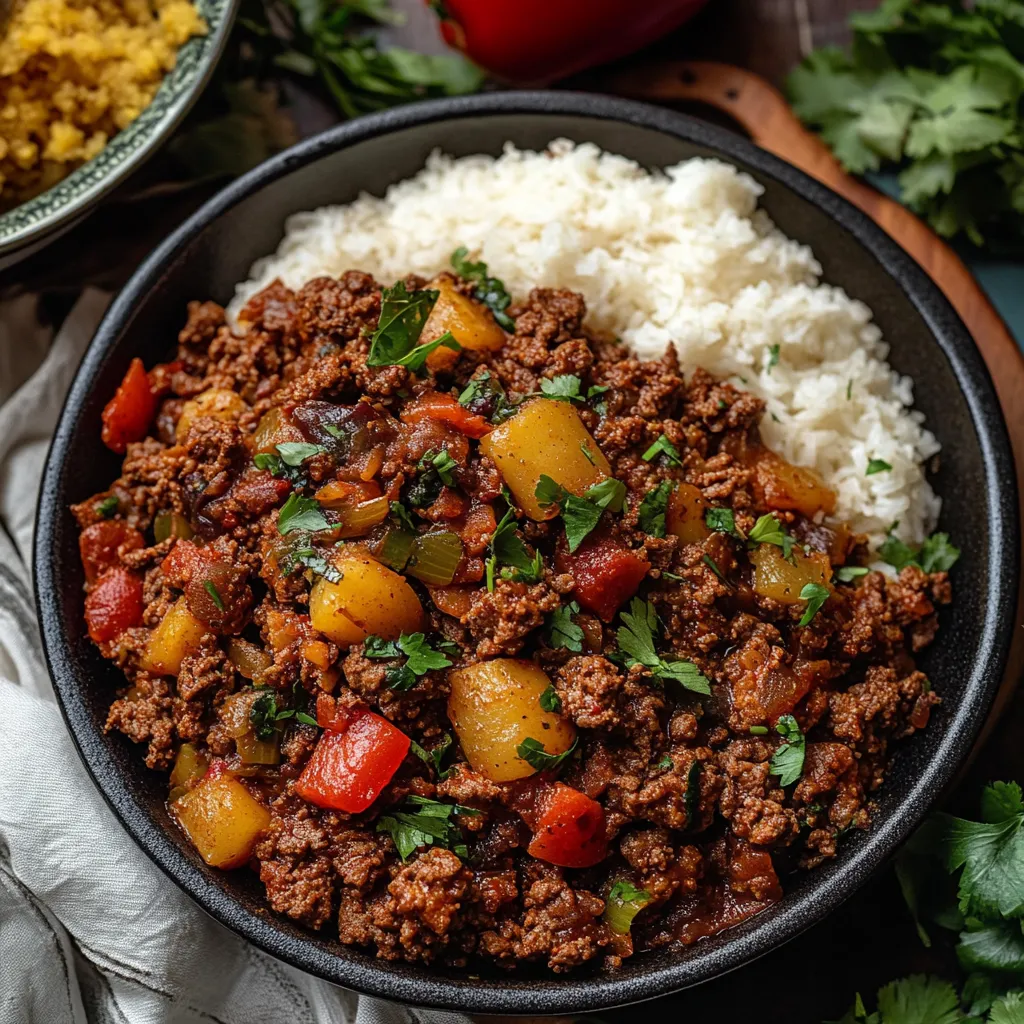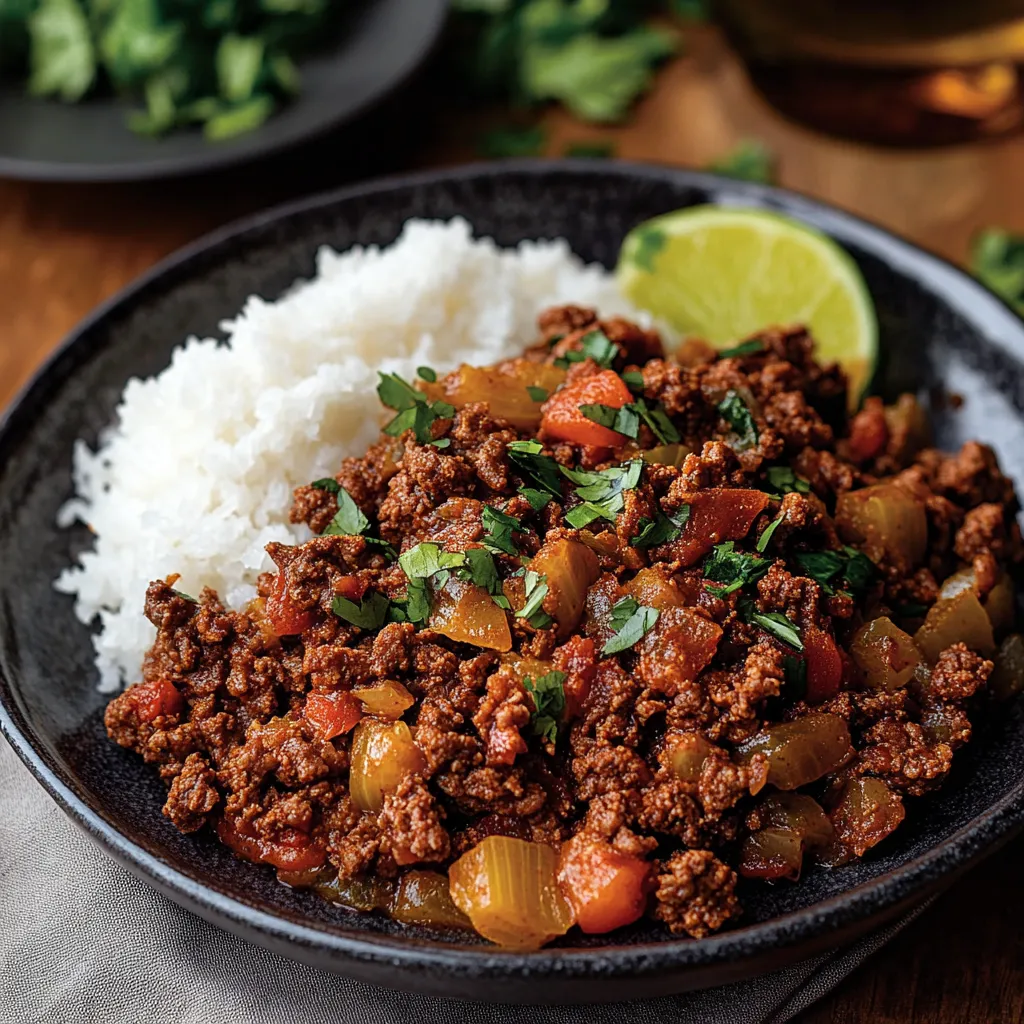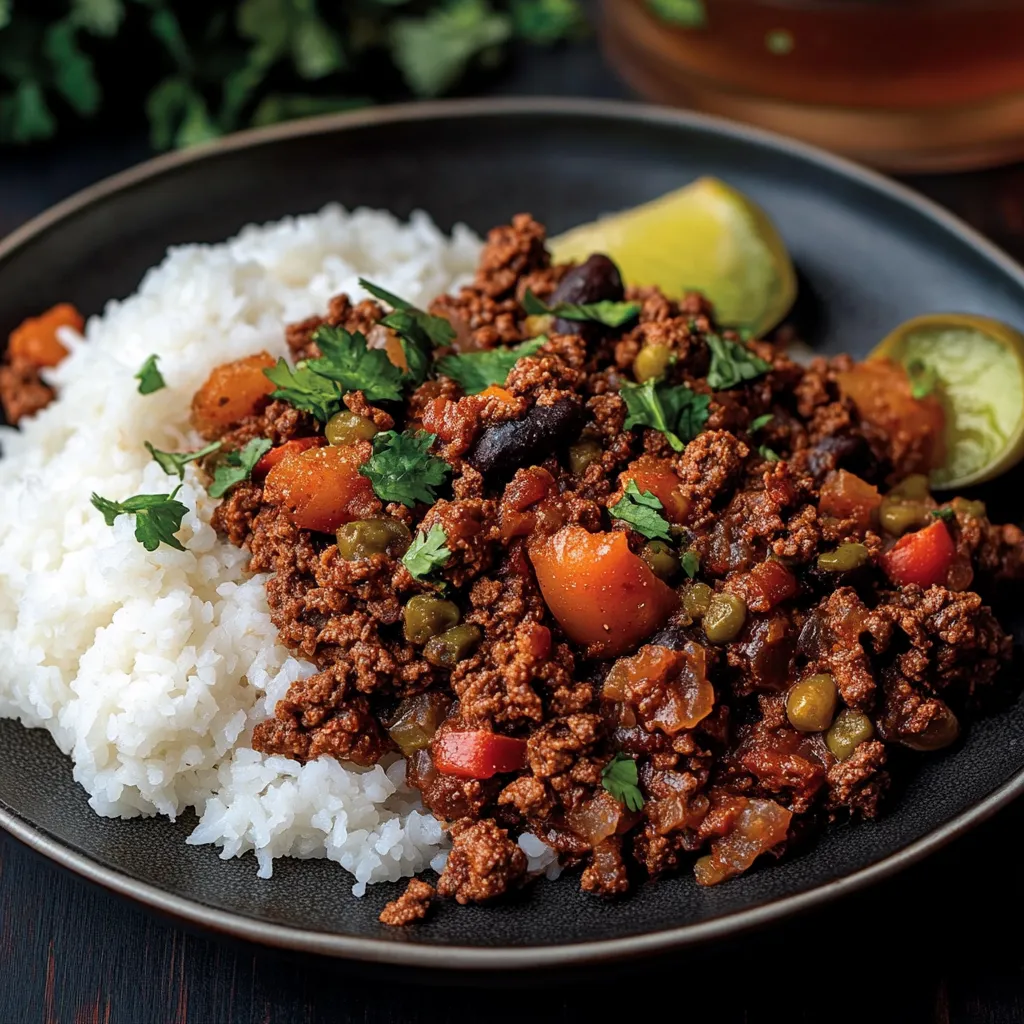 Pin it
Pin it
This Cuban beef picadillo is my go-to weeknight dinner that never fails to bring a taste of Havana right to my kitchen. The savory, slightly sweet, and tangy combination creates an irresistible flavor profile that makes this dish a guaranteed crowd-pleaser for both family dinners and casual entertaining.
I first made this picadillo after visiting Miami and falling in love with Cuban cuisine. Now it's in my regular rotation, especially when I need something comforting yet exciting that the whole family enjoys without complaint.
Ingredients
- Lean ground beef: Creates the hearty base while keeping the dish from becoming greasy
- Onion and bell pepper: Provide the aromatic sofrito foundation essential to Cuban cuisine
- Fresh garlic: Adds punchy flavor that defines authentic Latin dishes
- Dried oregano: Brings a traditional herbaceous note that stands up to the long simmer
- White wine: Deglazes the pan and adds subtle acidity to balance the richness
- Crushed tomatoes: Provide moisture and tanginess without making the dish soupy
- Worcestershire sauce: Adds umami depth and complexity often missing in homemade versions
- Dried currants or raisins: Offer traditional sweet notes that counterbalance the savory elements
- Green olives: Contribute briny pops of flavor and authentic Cuban character
- Fresh parsley: Brightens the finished dish with color and fresh herbaceous notes
Step-by-Step Instructions
- Brown the beef:
- Heat olive oil in a large skillet over medium high heat until it shimmers but doesn't smoke. Add the ground beef, breaking it into crumbles with a wooden spoon. Cook until the beef has lost its pink color and develops a deep brown crust in spots, about 5 to 8 minutes. Be patient during this step as proper browning creates essential flavor compounds. Season with salt and pepper to enhance the meat's natural flavor.
- Cook the aromatics:
- Reduce heat to medium to prevent burning delicate aromatics. Add the diced onion and bell pepper to the browned beef, stirring occasionally until they soften and become translucent but not browned, about 2 to 3 minutes. Add the minced garlic and stir constantly for 1 minute until fragrant but not browned, as burnt garlic will impart bitterness.
- Deglaze the pan:
- If using wine, pour it into the hot skillet and immediately scrape the bottom with your wooden spoon to release the flavorful browned bits. These contain concentrated flavors that will enhance the final dish. Let the wine bubble and reduce until almost completely evaporated, about 2 minutes.
- Build the sauce:
- Add the dried spices oregano, paprika, and cumin first, stirring for 30 seconds to bloom their flavors in the hot fat. Then add crushed tomatoes, tomato paste, and Worcestershire sauce along with another sprinkle of salt and pepper. Stir to combine all ingredients thoroughly into a uniform sauce.
- Simmer the picadillo:
- Cover the skillet and reduce heat to medium low, allowing the mixture to simmer gently for 15 minutes. This initial covered simmer helps the flavors meld while retaining moisture. The sauce should thicken slightly but remain saucy.
 Pin it
Pin it
The olives are my absolute favorite component in this dish. When I first made picadillo for my children, I worried they would pick them out, but to my surprise, those briny green gems became their favorite part too. Something about how they cut through the richness of the beef creates perfect bites every time.
Serving Suggestions
Cuban picadillo traditionally accompanies white rice, which absorbs the flavorful sauce beautifully. For an authentic experience, serve with black beans, fried plantains, and a simple avocado salad on the side. The contrast between the savory picadillo, starchy rice, and sweet plantains creates a balanced meal that showcases the diversity of Cuban cuisine.
Creative Uses Beyond Dinner
While picadillo makes a wonderful main dish, its versatility extends much further. Use it as a filling for empanadas or pastries by cooling it completely first. Stuff it into bell peppers with some cheese on top for a complete meal. Layer it into a casserole with plantains for a Cuban take on shepherd's pie. My family particularly enjoys it spooned into tacos with fresh cilantro and lime for fusion taco night.
Historical Context
Picadillo has roots in Spanish cuisine but transformed in Cuba with local ingredients and preferences. The addition of olives and raisins reflects the Spanish colonial influence, while the use of bell peppers and specific spice combinations developed in the Caribbean. Every Cuban family has their variation, with some adding capers, potatoes, or even hard boiled eggs. This recipe represents a traditional version that balances authenticity with ingredients available in most American supermarkets.
 Pin it
Pin it
This recipe brings vibrant Cuban flavors and warm memories of family dinners straight to your table!
Frequently Asked Questions
- → What can I serve with Cuban Beef Picadillo?
Cuban Beef Picadillo is traditionally served over white rice, but it also pairs wonderfully with black beans, fried plantains (tostones), or as a filling for empanadas. For a low-carb option, serve it over cauliflower rice or with a side salad.
- → Can I make Cuban Beef Picadillo ahead of time?
Yes! Picadillo actually tastes even better the next day as the flavors have more time to develop. Store it in an airtight container in the refrigerator for up to 3-4 days, or freeze it for up to 3 months.
- → Is there a substitute for the currants or raisins?
The sweet element is important for authentic flavor, but you can substitute dried cranberries, chopped prunes, or even a tablespoon of brown sugar or honey if you don't have dried fruit on hand.
- → What's the best ground beef to use for Picadillo?
An 80/20 or 85/15 lean-to-fat ratio works best for Picadillo. The slight fat content adds flavor, but you can use leaner beef if preferred. Ground turkey or chicken can also work as lighter alternatives.
- → Can I omit the olives from this dish?
While the olives provide the characteristic briny flavor that balances the sweetness of the currants, you can omit them if necessary. Consider adding a tablespoon of capers or a bit more salt to compensate for the missing salty element.
- → What type of white wine works best in this dish?
A dry white wine like Pinot Grigio or Sauvignon Blanc works well. If you prefer not to use alcohol, substitute with chicken broth or just skip this ingredient—it adds depth but isn't essential.
